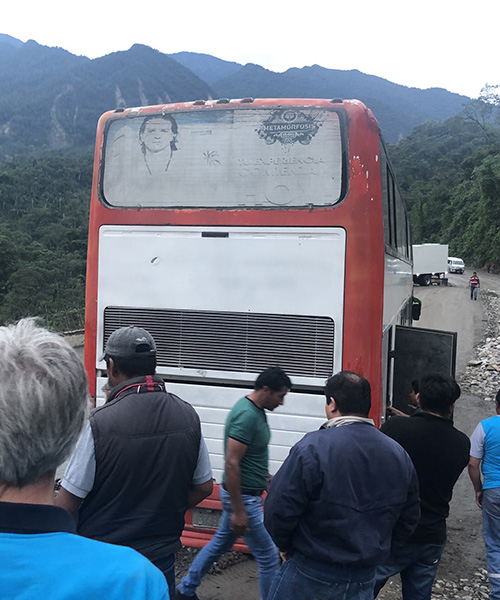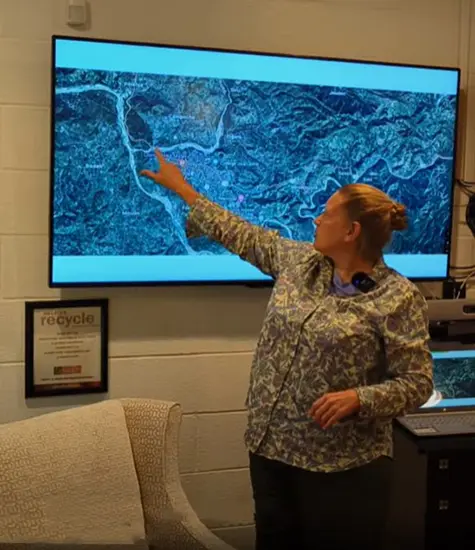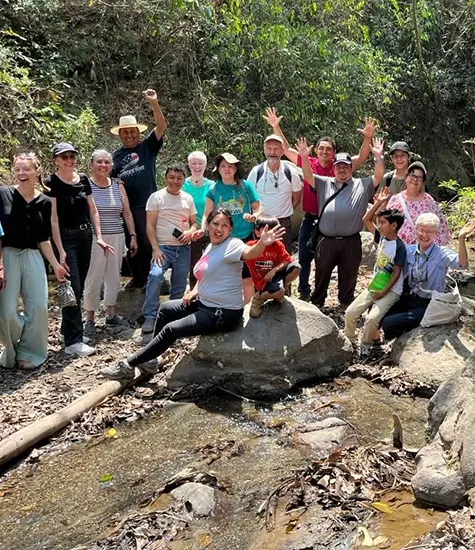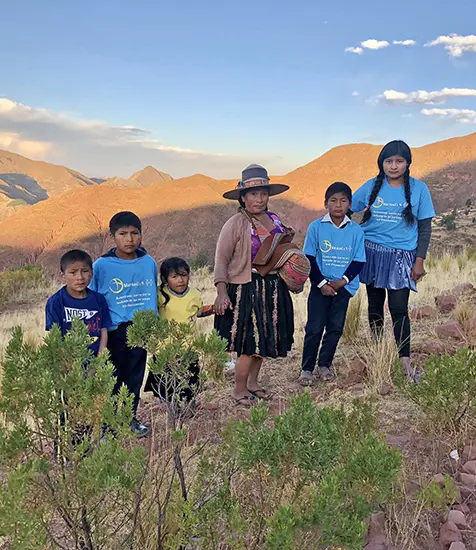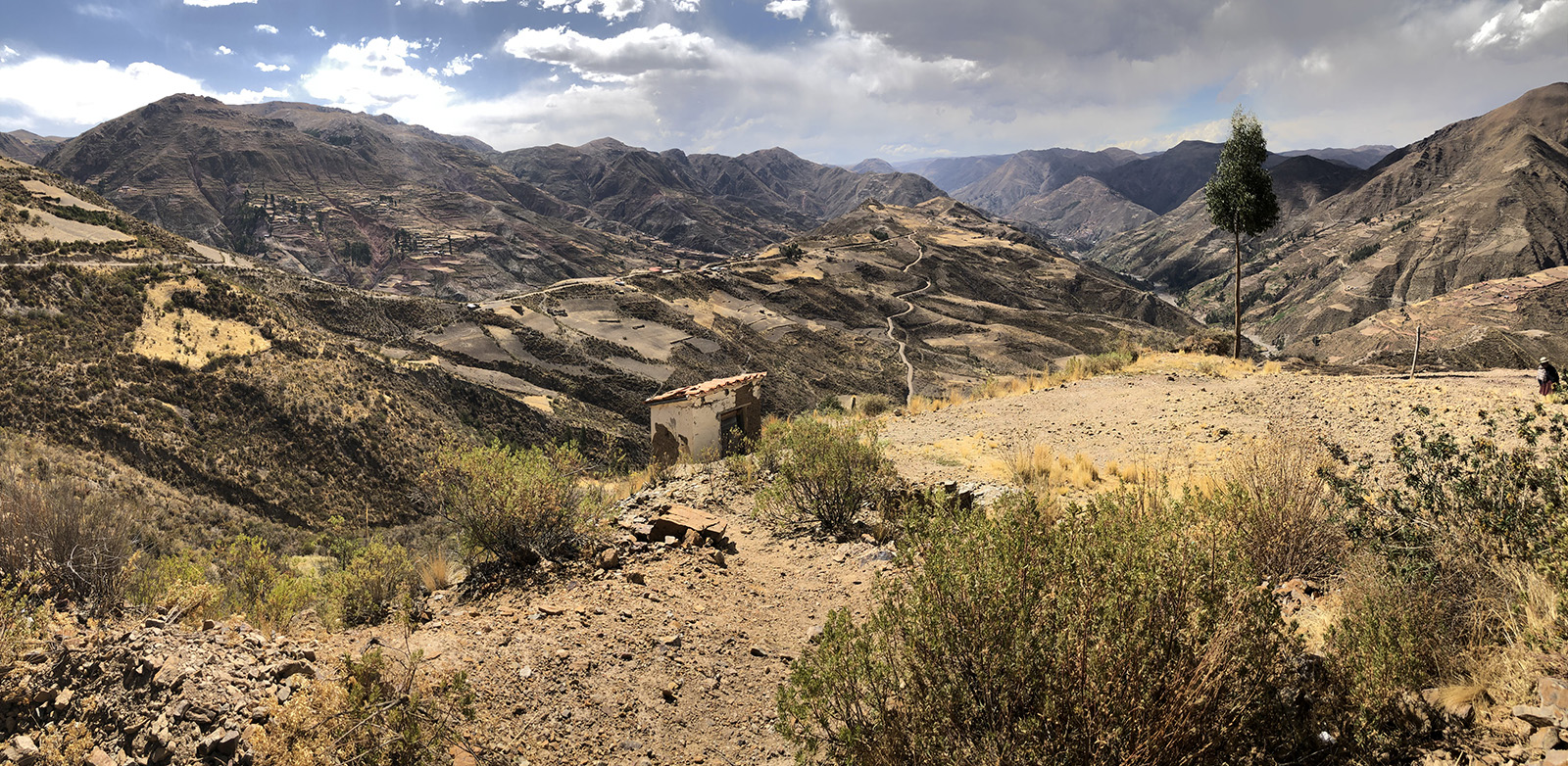
In the Andean mountains of Tacopaya. (Photos by Meinrad Scherer-Emunds)
In these times of the meta universe, just-in-time deliveries and social-media options that permit 24-hour sharing no matter where you live, one might assume that the logistical efforts it takes to reach people who need a helping hand would have disappeared or at least greatly decreased.
But in our ministry of the Fundación Justicia Social, a non-governmental organization that supports people with disabilities in our Cochabamba region here in Bolivia, the logistical obstacles we continue to face to reach people’s homes remain daunting — all of that before we can even confront the hurdles of directly collaborating with others to address their needs for health, education, rights empowerment and economic sustenance.
Each of the two areas we serve from our center in Cochabamba are a few hours from our city — one of them high up in the Andean mountains, three to four hours southwest; and the other in the country’s tropical region, over a mountain pass, six or more hours to the east.
In the Andean communities around Tacopaya, we drive on precarious dirt roads that wind up and down the sides of the mountains up to altitudes of more than 13,000 feet. Small roadside shrines, crosses and flowers mark the many places where vehicles have gone off the road and people died.
First-time visitors are often spooked by the sharp hairpin turns and steep slopes we have to traverse. During the rainy season, roads to many of the families we serve become unpassable due to rock or mud slides or whole portions of the roads being washed away.
One Friday afternoon, Juan, one of our missioners, was waiting for transportation from Tacopaya back to Cochabamba. When a “trufi” minibus taxi picked up passengers, he got in, but there were no more seats available. He was about to get off again to wait for the next trufi, but at the last second decided not to because he wasn’t sure there would be another one that day. That meant he had to stand for the whole bumpy, four-hour ride back to the city.
Turns out there was another trufi that afternoon, but on its way on the mountain roads, the driver of that minibus lost control and drove off the cliff. Of the 15 passengers, only four survived.
“It was a very close call,” remembers Juan, who still struggles to make sense of the experience. On the one hand, close friends and relatives tell him that “gracias a Dios” his life was spared that day. But he asks: “Wouldn’t that mean that, ‘thanks to God,’ all those other people got on that trufi and died? Having said that, throughout my time in mission, I have felt a strong sense of protection…. I am positive that God watches over me. Even if I will never truly understand how that happens in my life.”
A couple of weeks ago, we traveled to Entre Rios in the tropical region to make individual home visits, evaluate our ongoing activities and join with the local community to celebrate the Bolivian National Day of the Person with Disabilities. After travelling for almost seven hours — including through a long mountain pass section that is under construction, where Chinese contractors are building a new four-lane highway — we found that our continued, planned path to our tutoring program in nearby Bulo Bulo was blocked by protestors.
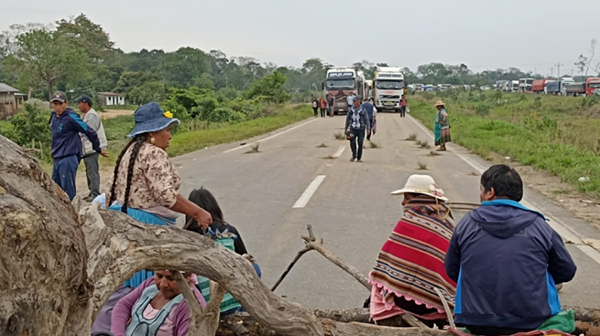
The bloqueo on Ruta Nacional 4 between Entre Rios and Bulo Bulo
This particular highway, Ruta Nacional 4, which runs from East to West, connects Bolivia’s three largest cities — Santa Cruz, Cochabamba and La Paz — and is a frequent target of a “bloqueo,” a form of political protest that is common in Bolivia. Protestors block the road with large rocks, piles of dirt, tree branches and their own bodies, in order to get the government to heed their demands.
This time, a group of pineapple growers were demanding that the government keep its promise to construct a processing plant so that their pineapples could be canned and sold to distant markets. Simultaneously and in another location, the same main highway was blocked by a group of parents demanding additional school classrooms for their children between Cochabamba and La Paz.
To avoid possible damage to our vehicle by angry protestors, who sometimes throw rocks at vehicles getting near road blockades, we took a cab to the road block, walked a half mile around the first barricade of rocks, barrels and branches, took motorcycle taxis to the next road block and then took a trufi the last couple of miles to the tutoring program.
Naturally, not everyone sympathizes with the highway-blocking. After two days of complete traffic paralysis — with trucks stalled and lined up along the highway for many miles on both sides of the bloqueo — several drivers in our area of Entre Ríos decided to create their own counter road blockade so that even small, local detours would not be accessible to small vehicles and motorcycles.
At the end of our three days in the region, as we began our return journey to Cochabamba, we received with gladness the news that the particular conflict behind this bloqueo had been resolved and that the roads were now clear. Trucks had started to resume their routes that morning.
After two relatively smooth hours of travel, we grew suspicious, however, as we again began to see miles of semi-trucks parked along our route. We soon found ourselves in another traffic jam, completely stopped.
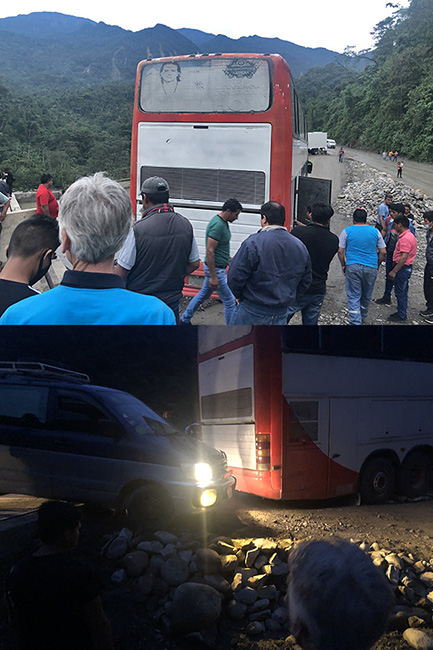
A stuck bus blocks the road on Ruta Nacional 4. Below, cars are finally able to pass on the new ramp.
A friendly truck driver advised us that a semi-truck had flipped over on its side and was now blocking both lanes two miles ahead — in the midst of the same area where the Chinese contractors are working on widening the highway to four lanes. He told us that small vehicles like ours could get through and so we followed his advice to drive in the lane for on-coming traffic to get around the stalled trucks in our lane of travel and get to the temporary detour.
We did so only to discover another dilemma. While the road construction workers had opened up a temporary route for small vehicles, an overloaded bus soon bogged down and got stuck in the loose gravel of the temporary road. Despite the efforts of more than 50 people — including ourselves — to push the bus out, the weight was just too much. After considering options, we joined other stranded motorists in hauling nearby rocks to create a ramp next to the stuck bus so that at least the small vehicles could continue onward.
We prayed and gave thanks as we successfully crossed this newest temporary road. Our joy, however, was short-lived. Two miles onward we discovered that the semi-trucks who had passed the accident site before the semi-truck had jackknifed, were having great difficulty getting up the steep highway climbs as the recent rains had made the road slick. We travelled mile after mile in first gear.
Even once we reached the high plains, we found that long convoys of trucks made it impossible to safely pass on the curving two-lane highway.
We finally reached our home at 1 a.m. — after traveling for 10 and a half hours. We were very stiff, weary and hungry, yet satisfied that God had made it possible for us to safely and successfully carry out all our ministry activities with the persons living with disabilities.

